This must be San Pedro
Underneath a freeway overpass in San Pedro, where the rumble of cars and semi trucks echoes from above, there is a hidden skate park. It’s both gritty and mesmerizing, made by a jumble of volunteer hands that have poured concrete, scooped out rain from the storms and artfully assembled every shiny tile of the decorative mosaics that cover the walls of this DIY playground.
Get to know Los Angeles through the places that bring it to life. From restaurants to shops to outdoor spaces, here’s what to discover now.
Gabriel Solis, a 59-year-old retired mason, has come to skate on an early Wednesday morning while his rescue dog watches. He hops off his board to take in the scene.
“I’m an artist and this is my canvas,” he says.
In a way, this underground refuge — the Channel Street Skatepark — feels like a symbol for San Pedro, a city where creativity and community seem to emerge in the most unexpected spaces. Solis, who’s lived there for 20 years, describes the neighborhood with words like “rebellious,” “punk” and “pure.”
“It’s a place where you don’t have to explain yourself,” he says. “Here, I’m Gabe. The people I know in skateboarding, I don’t even know their last names. It’s a culture. We know who you are because you put in the work. That’s what Pedro is. We build stuff here and destroy it with passion.”
Anchored at the southern end of the 110 Freeway, just 25 minutes from downtown L.A., San Pedro (pronounced “San Pee-dro” by those in the know) is an old Navy town once inhabited primarily by longshoremen, dock workers and their families. It’s long had a renegade spirit: In the late 1970s and early ’80s, it was the home of a swelling punk scene. (A 1981 Black Flag show at San Pedro High School, with new singer Henry Rollins making his debut with the band, is a moment that the punk forefathers still talk about.) San Pedro also is home to a robust Croatian community — in 2003, a stretch of 9th Street was named “Croatian Place” and every year, in honor of Croatia’s independence from Yugoslavia, a massive, multiday celebration happens there. And the city consistently attracts creatives. Art flourishes everywhere, from the gallery walls showcased at San Pedro’s First Thursday Art Walk to sidewalks, utility boxes and various urban crevices. (Try to find the many cats around the city painted by an artist mysteriously known as @ifoundyourcat on Instagram.)
At a San Pedro block party, small kids sitting on skateboards roll out of Calimucho Screen Printing shop, while people gather outdoors to listen to the surf band Bombón. There’s a hodgepodge of small business owners selling goods — houseplants, crystals, the San Pedro edition of Monopoly — and they all seem to be friends.
“San Pedro has that small-town vibe,” says filmmaker April Jones, whose documentary “Concrete Law” follows Channel Street Skatepark’s seven-year bureaucratic battle. “I’m friends with my tamale lady. I say ‘good morning’ to the little old lady walking her dog. I give my neighbors hugs.”
While creation is one theme that permeates the city, preservation is another. There’s a fight to protect history here — seen in recent efforts to restore landmarks including the Hey Rookie Pool, the Warner Grand Theatre and the Muller House Museum. Yet the sentiment overlaps with the knowledge that massive change is coming. Work is underway on a 42-acre, $160-million waterfront park and food hall called West Harbor, which is emerging on the former home of the shabby but beloved Ports O’ Call Village. Opening in 2025, it features a lengthy lineup of big-name tenants, such as Hollywood’s iconic mountain palace Yamashiro, immersive art experience Hopscotch and chic dog social club Bark Social.
As in all neighborhoods facing transformation, there’s both excitement and apprehension in the air. But one thing’s certain: Whatever San Pedro becomes next, locals will figure out how to make it their own.
See San Pedro for yourself. Here are 15 things to do in the city.
Love where you live? Tell us which neighborhood we should feature next.
What's included in this guide
Anyone who’s lived in a major metropolis can tell you that neighborhoods are a tricky thing. They’re eternally malleable and evoke sociological questions around how we place our homes, our neighbors and our communities within a wider tapestry. In the name of neighborly generosity, we included gems that may linger outside of technical parameters. Instead of leaning into stark definitions, we hope to celebrate all of the places that make us love where we live.

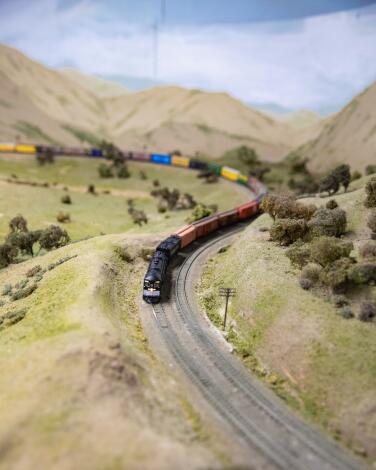
Enter the coolest miniature city at Belmont Shore Railroad Club
It’s amazing to see what the model railroaders have built here: an entire miniature city called Belmont. Though it is a fictional metropolis, it’s filled with re-creations of many real historical and geographic features of Southern California: the Monolith Cement Plant, San Joaquin and the green hills around the Tehachapi Loop. In the real world, a trip around the railroad line would be 20 miles.
The club, which accepts new members through an application process, opens its doors for public viewing from noon to 4 p.m. on Saturdays and 7 to 9 p.m. on Tuesdays. Kids are welcome, but note that the track is at a viewing height suited for adults, so you’ll likely have to lift up your young train fan to get a good glimpse.
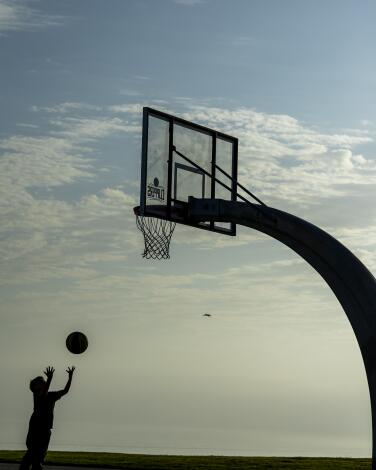
Shoot hoops while taking in the views at Angels Gate Basketball Court
Part of Angels Gate Park, home of the historic Korean Friendship Bell, the court has been featured in films such as “White Men Can’t Jump,” “He Got Game” and Ben Affleck’s “The Way Back.” The scene is particularly dramatic at sunset, when you’ll often find photographers trying to capture silhouettes of players against a blazing sky. The court also serves as a popular backdrop in the world of internet motivational quotes.
Managed by the City of Los Angeles Department of Recreation and Parks, the court is free to the public, no reservations required. Arrive early for your best chance of getting in some game time. It’s almost always windy there, so make sure to bring a jacket.
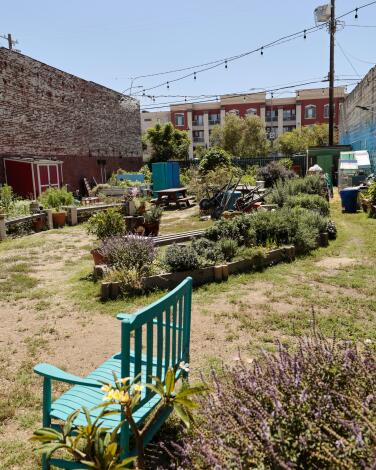
Enter the urban oasis of Feed and Be Fed Farm and the Garden Church
That had been the vision for the space when members of the Garden Church converted an empty lot into a “living sanctuary” in 2015. Today, church service happens on Sunday afternoons, but many other weekly happenings are nonreligious and run by Feed and Be Fed, the church’s nonprofit affiliate dedicated to restoring food justice. My kids and I attended a post-Halloween pumpkin smashing event where we were given giant mallets and the freedom to demolish old pumpkins with abandon. It was great fun — and we made compost in the process.
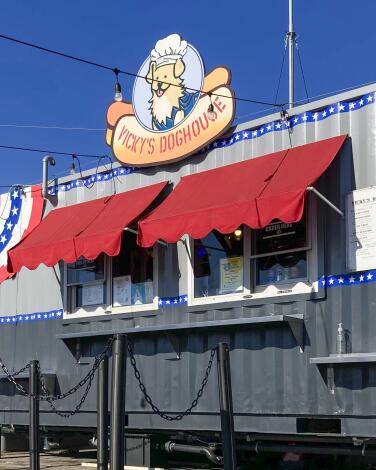
Chow down while learning some wartime history at Vicky's Doghouse on Battleship USS Iowa
Named after the ship’s mascot, Victory “Vicky” the dog, Vicky’s Doghouse occupies a shipping container with bright red awnings and patriotic flourishes. It serves gourmet hot dogs — I had “The Battlewagon” with cherry peppers, jalapeños, bacon bits, avocado and chipotle aioli — along with sides and beer on tap. While the food is tasty, it’s the setting that’s the star. You can take your meal and sit on Adirondack chairs facing the Port of Los Angeles, and when you’re done, peruse this area of the battleship. On board, you’ll find a World War II crane, tubs that once housed 40mm gun mounts and other naval artifacts. (Accessing the other decks and exhibits requires a general access pass.)
Check the battleship’s community calendar before visiting. Vicky’s Doghouse patrons can enjoy Sunday football on the fantail and other events.
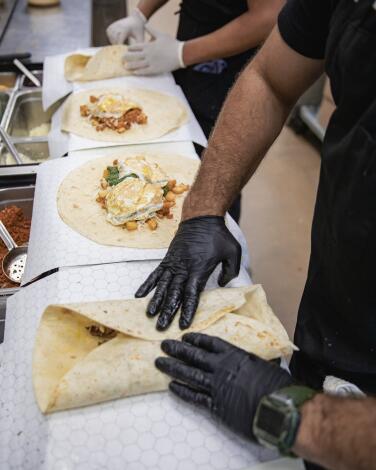
Get your chorizo fix in breakfast burrito form at the Chori-Man
Founder Humberto Raygoza, a fourth-generation chorizo maker whose family is from Zacatecas, Mexico, started gaining a following in SoCal when he’d sell chorizo door to door from a cooler on wheels that he named the Chori-Mobile. Nowadays, people trek to him to get their fix of chorizo, which comes in a few main varieties: traditional Zacatecano red (with a vegan option as well), Tolucan green pork and maple habanero pork. You can’t make a bad choice here. If you want more kick, the shop makes a jalapeño relish that you’ll want to forever spread on all things.
The breakfast burrito is a staple — and one of the best in L.A. Other options include tacos, a quesadilla and specials like a fried chicken sandwich. Prefer to create your own chorizo dish at home? There’s a refrigerator filled with packs of chorizo that are available for purchase.
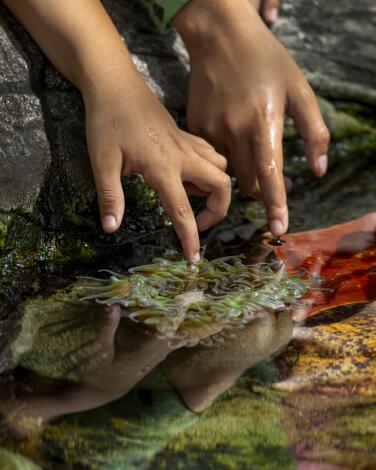
Touch sea stars and prickly urchins at Cabrillo Marine Aquarium
It is also a very hands-on aquarium. In the rocky shores area, visitors can gather around the recently renovated touch tank to feel sea stars and prickly urchins. In a building across the way, kids can wiggle through a “crawl-in” aquarium where they’ll be surrounded by sting rays and octopuses. And there’s a spot to make crafts to take home, like food chain mobiles, fish prints and biological sketches.
One of the aquarium’s quintessential events is the annual grunion run, in which people gather at night, around the time of the new moon, to see the beach covered in a blanket of silvery fish that have arrived to spawn. Runs typically happen between March and August and Cabrillo Marine Aquarium is one of the only organizations in Southern California to offer a guided grunion run program.
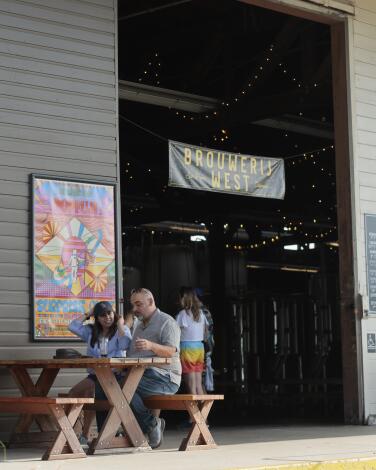
Grab a beer at Brouwerij West, home of San Pedro's liveliest outdoor courtyard
Beer enthusiasts will appreciate what’s on tap — Popfuji shines as a refreshing, highly gulpable pilsner, while the ruby-hued Dog Ate My Homework is a treat for those who like a dry sour. (If you’re looking for beer to go, four-packs are also available — and Brouwerji West has some of the coolest can art around.) Yet even non-drinkers can enjoy hanging out in the brewery’s indoor tasting room and vast outdoor courtyard, which hosts a solid rotation of food trucks. Throughout the month, there are live music events — from the high-octane monthly fiesta La Bota to Sunday’s more chill Brunch & Bands — which regularly draw masses.
Kids are welcome on most days (you can grab some free beer can stickers for them to play with), and if you’re feeling like doing some post-brewery shopping, you can head next door to local handmade marketplace Crafted.
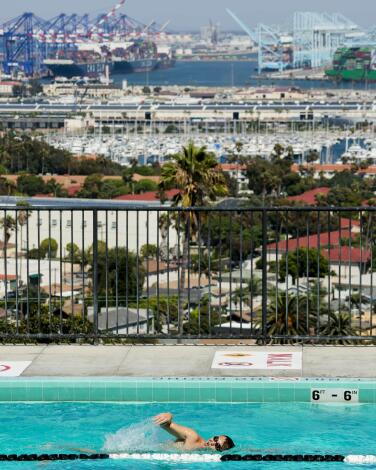
See the whole harbor (and get your laps in) at Hey Rookie Pool
But what’s even more remarkable is the pool’s history. It was built on Ft. MacArthur during the early years of WWII, funded by proceeds from a live show called “Hey Rookie” that aimed to boost the morale of the men stationed at the remote gun battery. For decades after the war, the pool was enjoyed by the San Pedro community until the 1990s when it was drained and became a canvas for taggers.
Now after a massive refurbishment, including years of delays, the year-round pool is open to all swimmers for an admission fee of $4 for adults and $1 for kids. There are youth swim teams and classes for all ages. Lap swim hours are limited, particularly in the winter, so check Hey Rookie’s website or Instagram page before visiting.
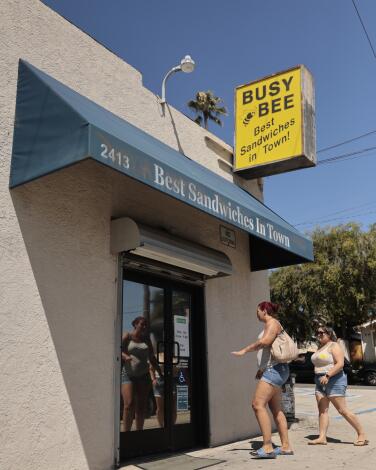
Get in line for one of those IYKYK sandwiches at Busy Bee Market
It’s no surprise that this nondescript IYKYK corner market always seems to have a line (which during the prime lunch hour often snakes around the building). The sandwiches, assembled by skilled staff members at a frenetic pace, are hefty and fresh, whether you opt for a hot pastrami dip or turkey with cheese or the aptly named “belly buster” that includes two hot meats of your choice.
Pro tip: If you don’t have much time, you can go straight to the deli counter and pick up a premade torpedo sandwich from a basket.
Busy Bee is cash only, so be sure to bring enough of it to cover your sandwich order and the bags of chips and other snacks you’ll undoubtedly grab from the market aisles on your way to the cashier.

Take in the Art Deco splendor of the Warner Grand Theatre (before it closes for renovations)
Designed by architect B. Marcus Priteca (who worked on the Hollywood Pantages) and Anthony Heinsbergen (who worked on the Wiltern), the 1,500-seat theater opened in 1931 as a movie house during the golden age of film. It’s now operated by the City of Los Angeles Department of Cultural Affairs and assisted by the nonprofit Grand Vision Foundation. Recent productions at the theater have included musicals, orchestra shows, ballets and film festivals.
Added to the National Register of Historic Places in 1999, the Warner Grand Theatre remains one of San Pedro’s most recognizable landmarks. If you can’t visit in 2023, try again in a couple of years after its $15-million renovation.
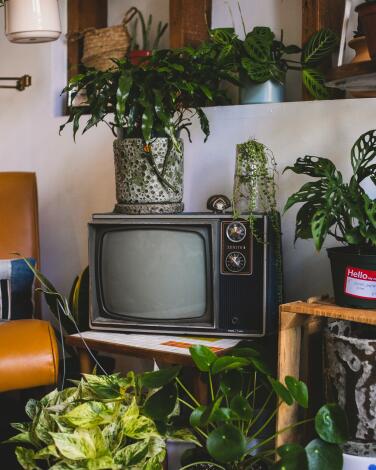
Pick out a pothos or ZZ to liven up your space at Prop House Plants
Their 300-square-foot store is small but mighty, with greenery inhabiting nearly every inch from floor to ceiling. Dozens of succulents hang from wooden shelves around the room, and colorful pots scavenged from estate and yard sales line the floor. Quirky details like an old CRT television, a vintage yellow telephone and an unassuming plant with a name tag reading “Frank” give the shop character.
Prop House specializes in beginner-friendly, low-maintenance plants like snake plant (Dracaena trifasciata), pothos and Zanzibar gem (a.k.a. ZZ plant). Brittany and Jose said their mission is to teach people how to care for their plants and show them that plant ownership is not as intimidating as it might seem.
Starting at $5, Prop House will help you settle a plant into a new pot by delicately removing old soil, inspecting the roots and adding fresh soil in-shop. Or starting at $10, the shop will assess your plant‘s overall health, diagnose any problems, remove unhealthy tissue and clean the leaves to make it look and feel brand-new.
“We’re like the doctor for plants,” Brittany said.
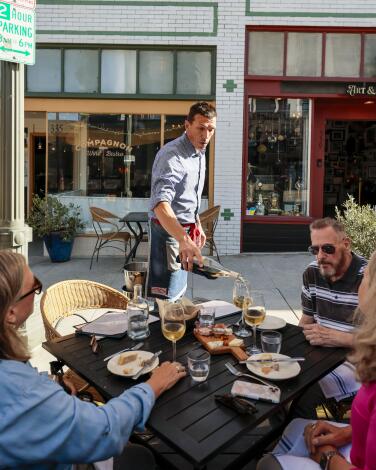
Imagine you're dining alfresco in France at Compagnon Wine Bistro
Thomas Compagnon, who started the restaurant with his wife, Loni, creates classic French dishes — beef Bourguignon, ratatouille and duck leg confit. A popular starter is the artful Maman Compagnon tomato and mustard tart, a family recipe. As a sommelier, Compagnon often creates dishes with a specific wine in mind, so be sure to ask for recommended pairings.
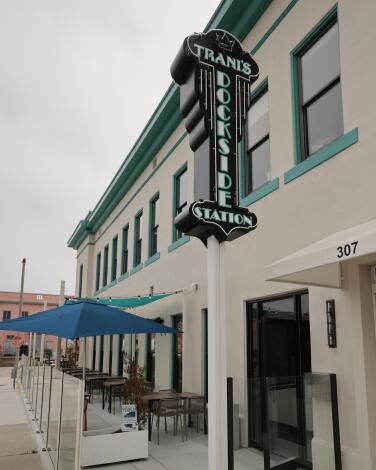
Taste bluefin tuna straight from the fishing boats at Trani’s Dockside Station
Trani’s occupies a building that was once L.A.’s immigration station — the “Ellis Island of the West,” Trani says — and as a tribute to its roots, a wall inside the restaurant is covered with customer-submitted photos of San Pedrans right after they arrived. (Trani says guests will be having a meal and then suddenly say, “That’s my great-great grandfather!”) There’s also a photo of the immigration station, circa 1920s, which workers were shocked to discover behind an original electrical panel.
Diners can opt to sit at the raw bar, which serves oysters, rock shrimp and Peruvian bay scallops. Standout menu items include squash blossoms with ricotta and honey, and an oyster mushroom rigatoni.
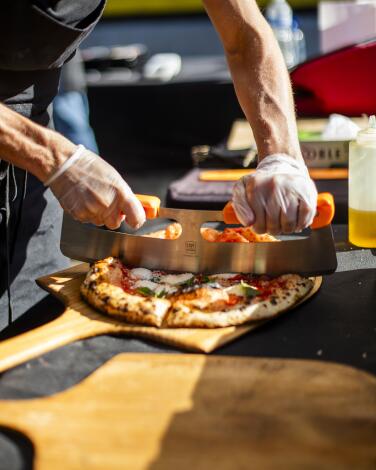
Taste the pizza dough of dreams at Miller Butler
Each starts with a canvas of dough that yields a soft, slightly chewy crust, something Butler perfected through intense experimentation. (“I kept trying new stuff — a little less sugar, more sugar, more water, yeast, changing the timing — and it became a weekly ritual,” he says.) What goes on top is ever-evolving. While Miller Butler nails the classics, some of the most requested pizzas are ones that started with serendipitous conversations with other local food entrepreneurs. Butler says they’re currently “in an Asian mode” with their pumpkin red curry pizza and a pizza made with white miso cream sauce, oyster mushrooms, sesame chili and yuzu BBQ drizzle.
It’s been a grassroots journey for Miller and Butler, who first started selling pizza in front of their house during the pandemic. Their next big goal is finding a space in San Pedro to open a bricks-and-mortar shop. For now, they’re at Brouwerij West almost weekly. Find their most up-to-date schedule on Instagram.
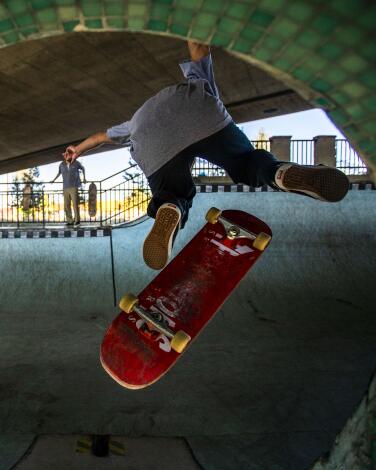
Do some ollies and heel flips at Channel Street Skatepark under the 110 Freeway
But for those who for years fought for the skate park’s reopening, this 8,000-square-foot haven underneath the 110 Freeway is so much more. Built as a DIY in 2002 by a group of skateboarders, it was shut down in 2014 by officials and labeled an “unpermitted skate park.” Community members fought back — not just those in the world of skateboarding but small business owners, longshoremen and City Council members. After a lengthy bureaucratic battle, the Channel Street Skatepark reopened in 2022 and is now kept and maintained by the San Pedro Skatepark Assn.
“A lot of passion has come out from underneath this bridge,” says skateboarder Gabriel Solis.
Check out the art that covers the walls of the space, created by local artists including Biganti26, Jaymeer and April Jones.
Sign up for The Wild
We’ll help you find the best places to hike, bike and run, as well as the perfect silent spots for meditation and yoga.
You may occasionally receive promotional content from the Los Angeles Times.





